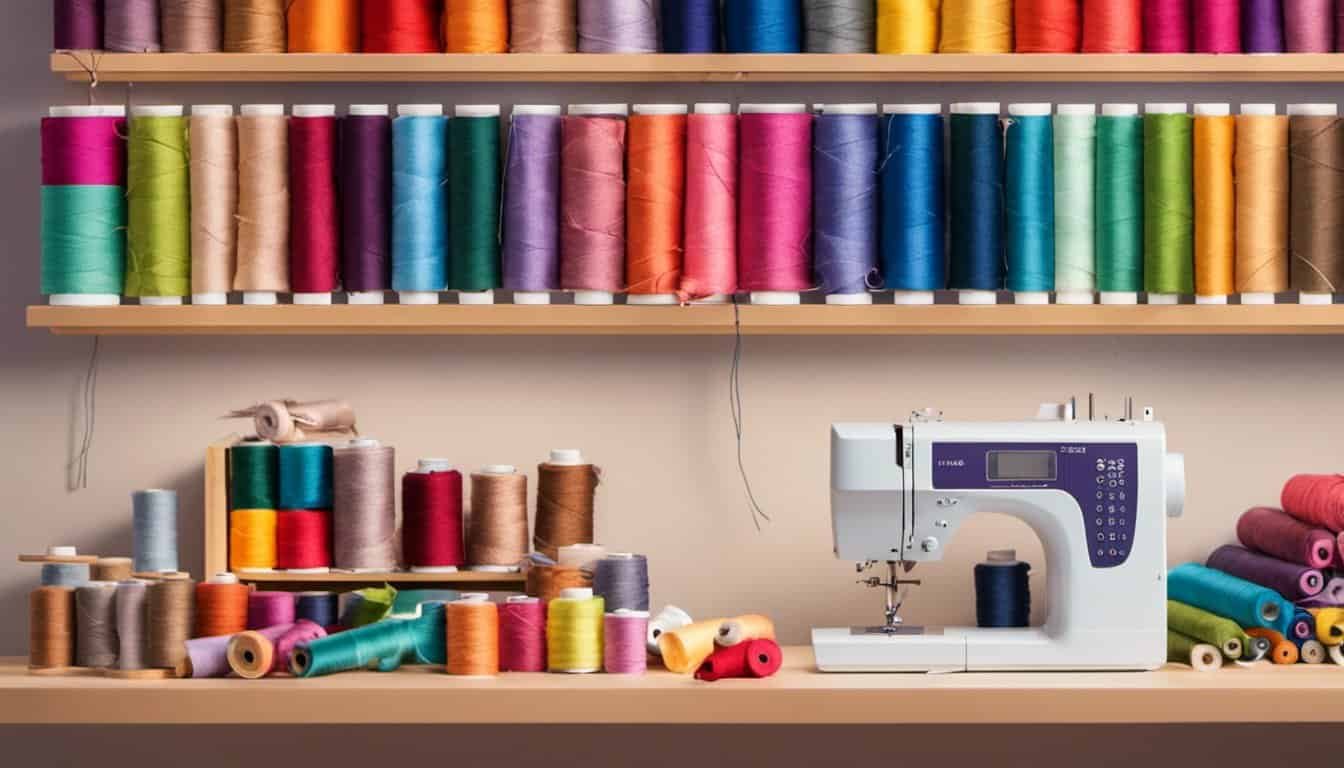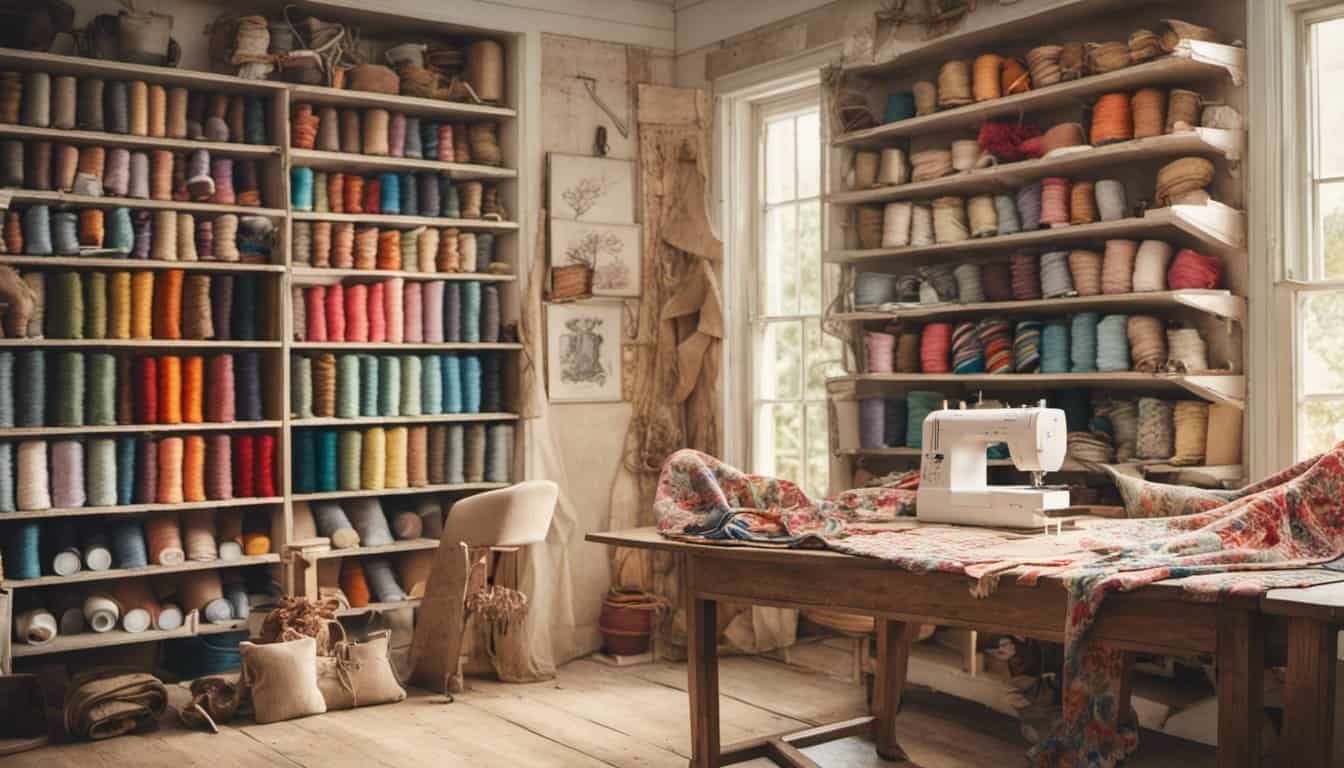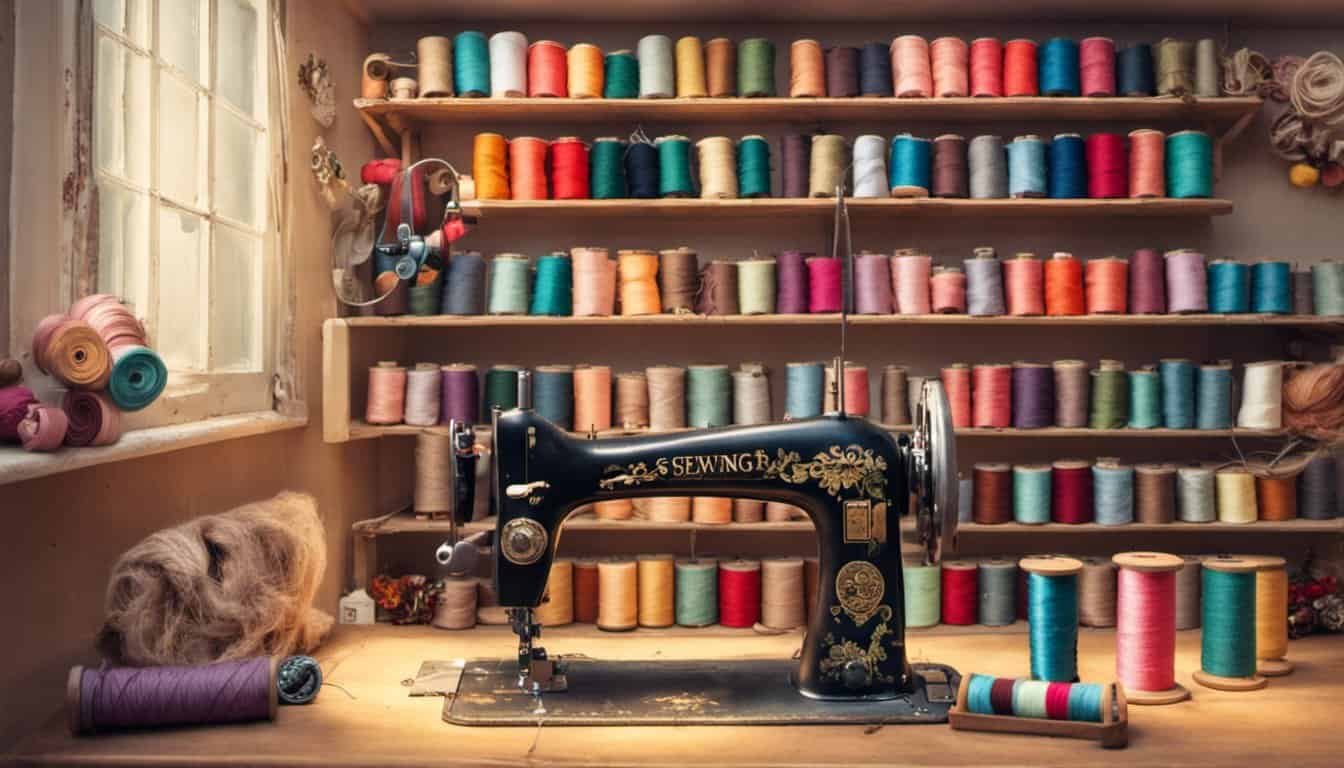Longarm quilting machines have revolutionized the quilting industry by making it easier and faster to create beautiful and intricate designs. With so many models available on the market, it can be overwhelming to choose the right one for your needs. In this article, I will compare some of the top longarm quilting machines to help you make an informed decision.
Understanding longarm quilting is essential before making a purchase. Longarm quilting machines are larger than traditional sewing machines and have a longer arm that allows you to work on a larger surface area. They also have a frame that holds the layers of fabric taut, making it easier to create even stitches. Longarm quilting machines are perfect for those who want to create large quilts or work on multiple projects at once.
Key Takeaways:
- Longarm quilting machines are larger than traditional sewing machines and have a longer arm that allows you to work on a larger surface area.
- They also have a frame that holds the layers of fabric taut, making it easier to create even stitches.
- When choosing a longarm quilting machine, consider factors such as throat space, stitching speed, and price.
Understanding Longarm Quilting
As a quilter, I understand the importance of having a reliable and efficient quilting machine. Longarm quilting machines are becoming increasingly popular due to their ability to handle larger quilts and their speed. In this section, I will explain what longarm quilting is and how the process works.
Longarm quilting is a type of quilting that uses a longarm quilting machine to sew together the three layers of a quilt: the top, batting, and backing. Unlike traditional quilting, longarm quilting machines allow you to move the machine over the quilt, rather than moving the quilt under the machine. This makes it easier to handle larger quilts and can speed up the quilting process.
The longarm quilting process begins by loading the quilt onto the machine’s frame, which holds the quilt taut and flat. The quilter then selects a quilting pattern and guides the machine over the quilt, following the pattern. The machine’s needle sews through all three layers of the quilt, creating a secure and durable stitch.
Longarm quilting machines come in different sizes and with various features. Some machines have computerized systems that allow you to program and save custom quilting patterns, while others have adjustable speed settings and stitch regulators to ensure consistent stitch length. It’s essential to consider your quilting needs and budget when selecting a longarm quilting machine.
In conclusion, longarm quilting is a popular quilting technique that uses a longarm quilting machine to sew together the three layers of a quilt. The process involves loading the quilt onto a frame, selecting a quilting pattern, and guiding the machine over the quilt. With the right longarm quilting machine, you can create beautiful and professional-looking quilts in a fraction of the time it would take with traditional quilting methods.
Key Features of Longarm Quilting Machines
If you’re in the market for a longarm quilting machine, it’s important to consider the key features that will help you achieve the best results possible. Here are some of the most important features to look for when comparing longarm quilting machines:
Stitch Quality and Control
One of the most important features to consider when choosing a longarm quilting machine is stitch quality and control. Look for machines that offer stitch regulation, which ensures consistent stitch length and helps prevent skipped stitches. Some machines also offer basting stitch options, which can be helpful for holding layers together while quilting.
Needle and Thread Features
Another important factor to consider is needle and thread features. Look for machines that offer needle positioner and pinpoint needle laser, which can help ensure accurate needle placement and prevent needle breaks. Tension control is also important, as it helps ensure consistent stitching and prevents thread breakage.
Machine Size and Workspace
The size of the machine and workspace is another important consideration. Look for machines with a large work area, which will allow you to easily quilt bed-size or even king-size quilts. Some machines also offer handlebars, which can help you maneuver the quilt more easily.
Additional Features
When comparing longarm quilting machines, consider any additional features that may be important to you. For example, some machines offer LED lighting or a LED light ring, which can help you see your work more clearly. Others may offer work lights or a touch screen for easy navigation.
User-Friendliness
If you’re a beginner, it’s important to choose a machine that is user-friendly and easy to use. Look for machines with an OLED screen or LCD touchscreen, which can make it easier to navigate settings and functions. Some machines also offer a beginner mode, which simplifies the settings and makes it easier to get started.

Speed and Precision
Finally, consider the speed and precision of the machine. Look for machines that offer high stitching speeds, such as 800 SPM or more. Some machines also offer precision mode, which allows you to slow down the stitching speed for more detailed work.
By considering these key features, you’ll be able to choose a longarm quilting machine that meets your needs and helps you achieve beautiful results.
Top Longarm Quilting Machines Comparison
If you’re looking for the best longarm quilting machines, you’ve come to the right place. I’ve done the research for you and compared some of the top models on the market. Here’s what I found:
Handi Quilter Amara
The Handi Quilter Amara is a popular choice among quilters. It features a 20-inch throat space and comes with the HQ Gallery2 Frame. The Amara has adjustable handles, LED lighting, and a built-in stitch regulator. It also has a bobbin winder and a thread break sensor.
King Quilter II Elite
The King Quilter II Elite is another great option. It has a 18-inch throat space and comes with a 10-foot frame. The Elite has a built-in stitch regulator, adjustable handles, and LED lighting. It also has a bobbin winder and a thread break sensor.
Juki Kirei HZL-NX7
« Brother RSQ9185 Review: The Ultimate Sewing Machine for Your DIY Projects
Babylock Lyric Pricing: How Much Does It Cost? »
The Juki Kirei HZL-NX7 is a high-end longarm quilting machine. It has a 12-inch throat space and comes with a 10-foot frame. The Kirei has a built-in stitch regulator, adjustable handles, and LED lighting. It also has a bobbin winder and a thread break sensor. One unique feature of the Kirei is its box feed system, which ensures even feeding of fabric.
Grace Company Q’nique
The Grace Company Q’nique is a mid-range longarm quilting machine. It has a 15-inch throat space and comes with a 8-foot frame. The Q’nique has a built-in stitch regulator, adjustable handles, and LED lighting. It also has a bobbin winder and a thread break sensor.
Millie and Freddie
The Millie and Freddie are both longarm quilting machines from APQS. The Millie has a 26-inch throat space and comes with a 12-foot frame. The Freddie has a 20-inch throat space and comes with a 10-foot frame. Both machines have a built-in stitch regulator, adjustable handles, and LED lighting. They also have a bobbin winder and a thread break sensor.
Overall, each of these longarm quilting machines has its own unique features and benefits. It’s important to consider your specific needs and budget when choosing the right machine for you.
Considerations for Buying
When it comes to buying a longarm quilting machine, there are a few things to consider before making a purchase. Here are some key factors to keep in mind:

Price and Affordability
Longarm quilting machines can range in price from a few thousand dollars to tens of thousands of dollars. As a quilter, I understand that price is a major consideration when making a purchase. It’s important to determine a budget and stick to it. However, it’s also important to remember that a higher price tag may come with additional features and benefits.
If you’re on a tight budget, consider a domestic machine or a portable model. These machines are more affordable and still offer a wide range of features. They’re also perfect for smaller projects like baby quilts.
Warranty and Support
When investing in a longarm quilting machine, it’s important to consider the warranty and support options. A lifetime warranty is ideal, but not all manufacturers offer this. Be sure to read the fine print and understand what is covered under the warranty.
In addition, consider the support options available. Will the manufacturer provide technical support over the phone or online? Is there a local dealer or distributor who can provide in-person support and training? These are important factors to consider when making a purchase.
Accessories and Add-Ons
Longarm quilting machines come with a variety of accessories and add-ons. Some machines may include a set of presser feet, while others may require you to purchase them separately. It’s important to consider what accessories and add-ons are included in the purchase price and what you may need to purchase separately.

Optional accessories like batting rollers, pantograph patterns, and laser guides can enhance your quilting experience. Be sure to research what accessories are available for the machine you’re considering and factor in the cost when making a purchase.
Overall, when considering a longarm quilting machine purchase, be sure to determine your budget, research warranty and support options, and consider the accessories and add-ons available. By doing so, you’ll be able to make an informed decision that meets your quilting needs.
Computerized Vs Manual Longarm Quilting Machines
When it comes to longarm quilting machines, there are two main types: computerized and manual. As someone who has experience with both, I can tell you that there are pros and cons to each.
One of the biggest advantages of computerized longarm quilting machines is the ability to program and save presets. This means that you can easily switch between different quilting designs without having to manually adjust the machine every time. Additionally, computerized machines often have a larger working area, which can be helpful for larger quilts.
On the other hand, manual longarm quilting machines offer more control and precision. When using a manual machine, you have the ability to adjust the speed and stitch length on the fly, which can be helpful when working with different fabrics or designs. Manual machines also tend to be more affordable than their computerized counterparts.

Another consideration when choosing between computerized and manual longarm quilting machines is the type of bobbin used. Computerized machines typically use an M-class bobbin, which holds more thread and requires less frequent changes. Manual machines, on the other hand, often use a smaller bobbin that may need to be changed more frequently.
If you do decide to go with a computerized longarm quilting machine, you may want to consider investing in a Q-matic system. This system allows you to digitize and upload your own quilting designs, giving you even more control and customization options.
Ultimately, the decision between a computerized and manual longarm quilting machine comes down to your personal preferences and needs. Both types have their advantages and disadvantages, so it’s important to do your research and choose the machine that will work best for you.
Conclusion
After comparing the top longarm quilting machines available in the market, I must say that each one of them has its own unique features and benefits. However, there are a few machines that stand out in terms of top-quality performance and table options.
The Handi Quilter Amara 20 inch Longarm Quilter Machine is an excellent choice for those who are looking for a machine with a large throat space and a user-friendly control panel. The Elna Elnita ef72 Sewing and Quilting Machine is another great option for those who want a machine that is versatile and easy to use.

For those who want a machine that is designed for professional use, the Grace Q’nique 21 Long Arm Quilting Machine is an excellent choice. This machine is equipped with a high-speed motor and has a large throat space, which makes it ideal for quilting large projects.
Lastly, the Juki Kirei HZL-NX7 Next Generation Long Arm Sewing and Quilting Machine is a great option for those who want a machine that is designed for both sewing and quilting. This machine has a large throat space and comes with a variety of features that make it easy to use.
Overall, when it comes to choosing the best longarm quilting machine, it is important to consider your own needs and preferences. With so many great options available, you are sure to find a machine that meets all of your needs and helps you create beautiful quilts.
Frequently Asked Questions
What are some affordable long arm quilting machines?
If you’re looking for an affordable long arm quilting machine, there are a few options to consider. Some popular brands that offer affordable machines include Juki, Grace, and King Quilter. These machines typically have a smaller throat space than more expensive models, but they are still capable of producing beautiful quilts.
What are some popular brands of long arm quilting machines?
There are many popular brands of long arm quilting machines, each with their own unique features and benefits. Some of the most popular brands include APQS, Gammill, Handi Quilter, and Innova. It’s important to do your research and compare features before making a purchase.

Are there any used long arm quilting machines available on Craigslist?
Yes, there are often used long arm quilting machines available on Craigslist. However, it’s important to be cautious when purchasing a used machine. Make sure to thoroughly inspect the machine and test it before making a purchase. It’s also a good idea to ask for references or reviews from previous buyers.
How much does a long arm quilting machine typically cost?
The cost of a long arm quilting machine can vary greatly depending on the brand, features, and size. Entry-level machines can cost anywhere from $5,000 to $10,000, while high-end machines can cost upwards of $30,000. It’s important to consider your budget and quilting needs when choosing a machine.
What is the difference between long arm quilting and machine quilting?
Long arm quilting and machine quilting are both done using a sewing machine, but there are some key differences. Long arm quilting machines have a larger throat space and are designed specifically for quilting. This allows for easier maneuvering of large quilts and more intricate designs. Machine quilting can be done on a regular sewing machine, but it can be more difficult to handle larger quilts.
What should I consider when choosing a long arm quilting machine?
When choosing a long arm quilting machine, there are several factors to consider. Some important considerations include the size of the machine, the features it offers, and the level of customer support provided by the manufacturer. It’s also important to consider your budget and quilting needs before making a purchase.

















